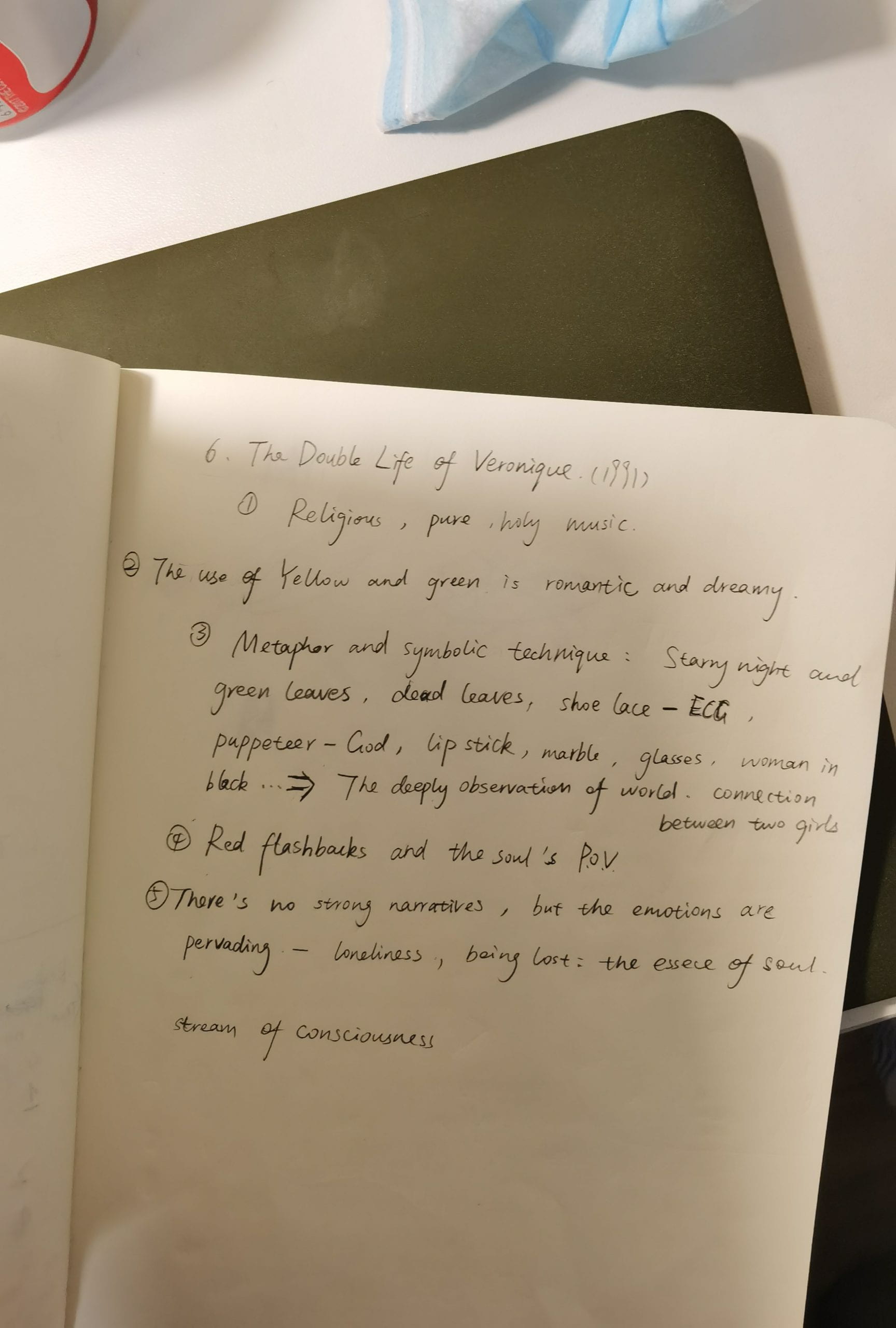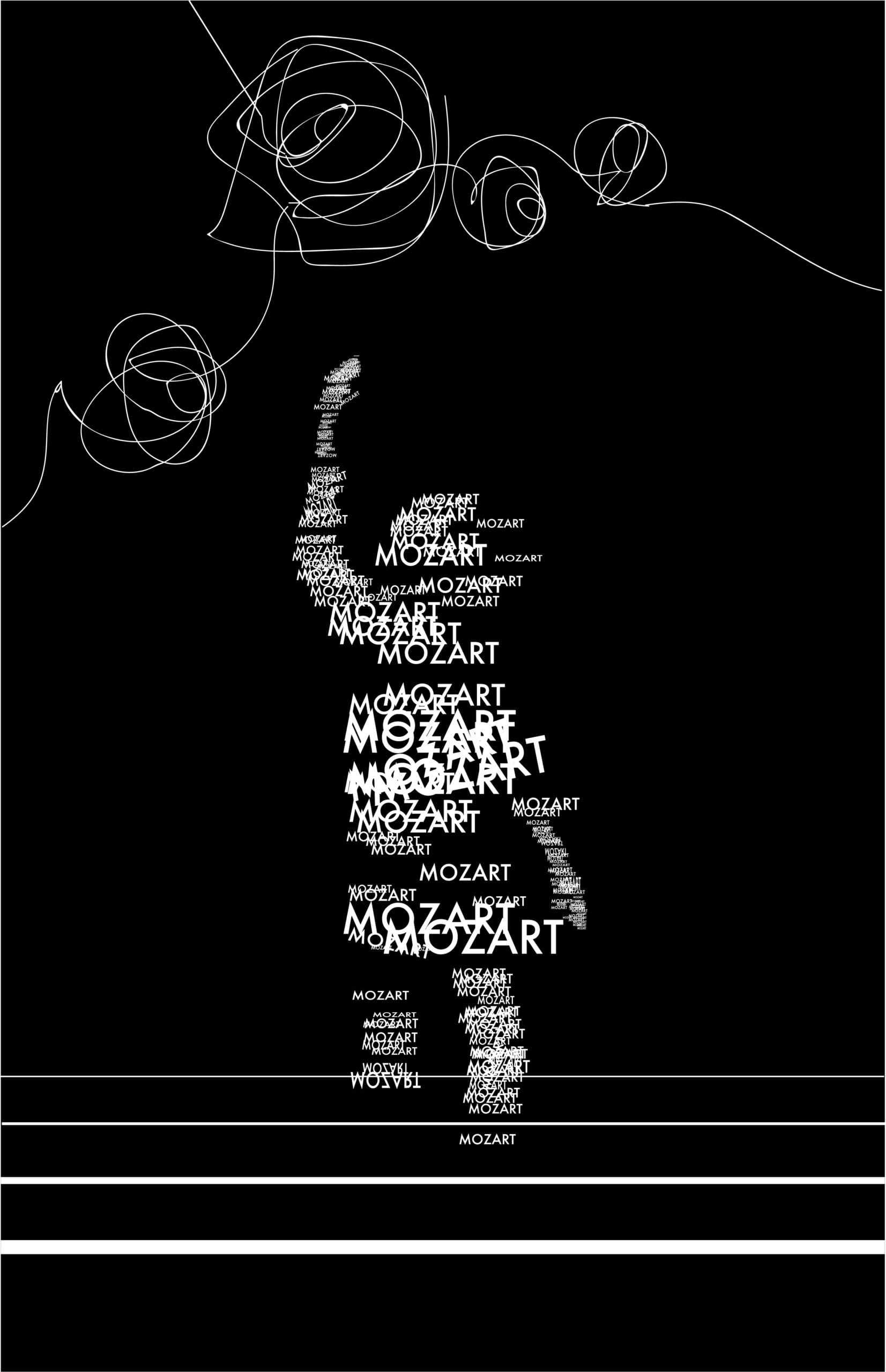

Visual Moments




Photographed: 09/20/2020
The Music Poster Project
A. Artist’s Name, Title of Music, Artist Name
Skyler Liu, Requiem in D minor by Mozart
B. Concept and Design
My concept is to depict the spirit of “being towards death” that Mozart conveys by his last composition. There’s always an image occurring in my head while listening to Requiem, I can see a figure walking alone, wading through mountains and rivers, walking towards the stars in his heart. The river which is consuming him is the water of death and he knows his time is up, but he wouldn’t give up the reach of his stars until the last moment coming. And I know the stars as for Mozart, are the meaning of life, everything marvelous: music, beauty, romance, love. So I want to visualize the image in my head by this music poster.
I used the Gestalt theory on all the elements of my work. The combination of numerous “MOZART”s shape Mozart’s figure: because of the principles of similarity, proximity, and closure, which means different sizes of “MOZART” are the same letters and they are close, so the audience would recognize them as a group, then understand the rough figure as a completed visual element – Mozart’s figure. The starlight, the water of death, and the crosses also reflect on the principles of similarity and proximity. For the figure/background relationship, my poster uses the large space of black as the background, so the starlight can be emphasized and construct a sense of Mozart is fading into the darkness.
The One Black Square project certainly helped me more familiar with the Gestalt principles and it inspired me to visualize the image of my mind as a great source of design.
C. Process
I sketched a draft of the image I want to express before I started the typographic design work. It helped me a lot when I was working on shaping Mozart’s figure as I adjusted the draft into transparency and made it at the bottom of my layers to be a track which I could apply to. The drawing of starlight might be the most difficult one. I could certainly not copy the track of my sketch but drew the freehand brushwork lines by mouse. Many tries looked not right and I had to re-draw the lines over and over again. I thought of using the path tool to replace all the lines with letters, but I felt it didn’t look as good as the line version, so I didn’t make the change before mid-critique.

The mid-critique led me back to follow the instructions and to further modify some compositions. However, when I tried to replace all the lines of starlight with letters, I found that many lines that I just took plenty of time to draw couldn’t be recognized by the path tool or could only be recognized partly. I could only redraw the lines again and again because I was not sure the rule of the path tool to recognize the line or not, I could only try by drawing each line to see if it works. And sometimes, because there are lines that could only be recognized partly, I had to try to trace the original lines’ rest part, but it was really hard to use the mouse completing such a delicate work and I had countless failures. Luckily I made it in the end. I also added some crosses beneath the dead water to make the poster have better composition and emphasize the meaning of it.

D. Conclusion
I think I would try to achieve a better composition of all the visual elements. My final work seems to lose the aura of my imagination which makes me kind of frustrated.
E. Image of Poster

A high-quality image can be found here.
Reading Notes for Story of Your Life
This is a work known for its conception, and the plot is not complex.
It begins with aliens descending on the earth. This kind of plot has been traversed in human stories for hundreds of years (earlier, it was considered to be a manifestation of God…), there is nothing new, but the reason why this plot is enduring is that it can evolve countless kinds possibilities. In this novel, the protagonist is set as a linguist. The military came to visit the linguist, hoping to understand the language of aliens. So humans and aliens started video chats for a long period of time (why using video… the author didn’t explain, only wrote a guess, it doesn’t matter).
In the video, the alien looks like this:
“It looked like a barrel suspended at the intersection of seven limbs. It was radially symmetric, and any of its limbs could serve as an arm or a leg. The one in front of me was walking around on four legs, three non-adjacent arms curled up at its sides. Gary called them ‘heptapods.’
…Seven lidless eyes ringed the top of the heptapod’s body…with eyes on all sides, any direction might as well be ‘forward.’” (5)
“they had an orifice on the underside of their body, lined with articulated bony ridges: probably used for eating, while the one at the top was for respiration and speech.” (10)
At the same time, the novel is still narrating in two lines. The second line is the letter from the author to his daughter, as a letter of memory. A kind of family line.
During the online chat, from spoken to written, the protagonist gradually begins to master the language of aliens. The protagonist discovers that the spoken language of the aliens does not correspond to the written language. Human written language can be completely equivalent to individual syllables, and syllables can also correspond to relevant words. But the aliens’ script isn’t word-divided. They write a sentence “by joining the logograms for the constituent words”. For writing more conveniently, they will rotate or modify the logograms.
“So they can read a word with equal ease no matter how it’s rotated,” Gary said. He turned to look at the heptapods, impressed. “I wonder if it’s a consequence of their bodies’ radial symmetry: their bodies’ radial symmetry: their bodies have no ‘forward’ direction, so maybe their writing doesn’t either. Highly neat.” (11)
“Ease of learning isn’t the primary force in language evolution. For the heptapods, writing and speech may play such different cultural or cognitive roles that using separate languages makes more sense than using different forms of the same one.” (14)
“…When a Heptapod B sentence grew fairly sizable, its visual impact was remarkable. If I wasn’t trying to decipher it, the writing looked like fanciful praying mantids drawn in a cursive style, all clinging to each other to form an Escheresque lattice, each slightly different in its stance.
…Depending on a semagram’s declension, inflections could be indicated by varying a certain stroke’s curvature, or its thickness, or its manner of undulation; or by varying the relative sizes of two radicals, or their relative distance to another radical, or their orientations; or various other means.”
After, the communication between the physicists and aliens also makes breakthrough progress. After failed to communicate most of the basic concepts with aliens, the physicists find the aliens can understand the principle of least action (“Fermat’s principle”, which is a variational principle) at a glance. The so-called principle of least action was first expressed by Moperti: for all the natural phenomena, the action tends to the minimum. Physicists discovered that some physical properties can only be defined by humans using mathematical integrals, but aliens think they are the most basic thing.
The linguist thinks of the aliens’ ability to write their extremely complex language in one go and the role of one stroke in multiple radicals. She thinks that the entire sentence (word) must have been planned from the moment they start to write. Combining the principle of least action is to achieve the “most” value as the goal, so she guesses that the alien’s cognitive method is purpose-oriented.
“I understood why the heptapods had evolved a semasiographic writing system like Heptapod B; it was better suited for a species with a simultaneous mode of consciousness. For them, speech was a bottleneck because it required that one word follow another sequentially. With writing, on the other hand, every mark on a page was visible simultaneously. Why constrain writing with a glottographic straitjacket, demanding that it be just as sequential as speech? It would never occur to them. Semasiographic writing naturally took advantage of the page’s two-dimensionality; instead of doling out morphemes one at a time, it offered an entire page full of them all at once.
And now that Heptapod B had introduced me to a simultaneous mode of consciousness, I understood the rationale behind Heptapod A’s grammar: what my sequential mind had perceived as unnecessarily convoluted, I now recognized as an attempt to provide flexibility within the confines of sequential speech. I could use Heptapod A more easily as a result, though it was still a poor substitute for Heptapod B.” (32)
When I read this, I guessed that teleology was the author’s starting point. The reason why the author came here so hard was that he had read teleology at a certain time in his life, so the idea of writing this work was born. (But not right… the author said in the postscript that he saw the variational principle in physics and was fascinated by it, so he wrote this work.)
The related thoughts of teleology were first mentioned in the work of Plato and Aristotle, especially being influenced by Aristotle. Ancient Greece in philosophy is like China in table tennis. A group of worry-free slave owners thought about philosophical issues when they were full every day more than two thousand years ago, so they thought about most of the questions that future generations could consider. Although the fun and harvest of philosophy mainly lie in the process of thinking itself, but not being able to escape the shadow of predecessors is not a good feeling after all.
When analyzing the causes of things in Metaphysics, Aristotle summarized four types of causes: material cause, formal cause, dynamic cause, and purpose cause. The so-called material cause is the essential attribute of things. Wood is wood and stone is stone. They are different from each other; form, as the name suggests, wood can make a bed, stone can be a statue, that is, because of the change of form; the dynamic cause is the driver of change, such as the sculptor is the driving force of the statue; the purpose cause is the form it wants to achieve. The influence of these ideas on the whole world lasted until the period of the scientific revolution.
But the purpose cause is a very anthropomorphic concept after all, and it cannot be included in the scientific system. In the modern times, the mechanistic theory has gradually become the protagonist of the interpretation of the world: the movement and static of objects are due to the different effects of force; rain is due to the condensation of vapor; the formation of elements is due to the occurrence of nuclear fusion reactions…not the objects move because it wants to reach a certain location; not it rains because the water wants to return to its natural location.
From Francis Bacon’s “New Tools”, gradually the purpose as a cause is no longer accepted by people, but the teleology still has its market.
In terms of philosophy, Kant believes that because human rationality is limited, it is necessary to introduce teleology to understand the world; Hegel also believes that teleology should be introduced because he advocates “absolute spirit”.
In this novel, we can also feel the difference between the two: humans need the concept of force to explain the movement, while aliens think that movement is only to achieve a certain purpose, as long as the minimum amount is required, they don’t need the concept of force as a basis, but extrapolate force.
It suddenly occurred to me: For a long time, in the choice of scientific theories, scientists will also judge which of several alternative theories is better based on the so-called principle of simplicity. That is, when there are multiple theories and their effects achieve for explaining some phenomena is similar, the simplest one would be chosen (how to judge in reality is not discussed here, which is a bigger problem). In practice, this rule works well, but it has no theoretical basis (finiteness of human life may explain the tendency?). Because the law has a preference for simplicity, so consciously move towards simplicity? Is this also teleology?
But there will be a problem here: if the world is really teleological, it will lead us into determinism: the world has a purpose already preset from the beginning, and we only have to move towards it step by step.
In the novel, the author also wrote down along this logic. In the process of learning alien languages, the linguist also learns part of their cognitive styles, and thus perceive the existence of “purpose”, so she can see the future. The second line of the novel is the life of his own child as the author perceives, that is, the title: Story of Your Life. Then the linguist protagonist pondered the issue of free will. If the purpose is doomed, then man has no free will but is only a pawn of gods or natural gods in pantheism. So does this kind of life make sense? Here the author explores two possibilities: 1. If free will exists, it is impossible to predict the future, because the free will can change the foreseen process. Even if the process is changed, the foresight will become incorrect and form Paradox; 2. After predicting the future, the man would think it is an obligation of his own to act strictly according to the prophecy.
I personally think that the views expressed by the author in the form of free will can also be logically self-consistent: only those who follow teleology can learn to perceive the world with “purposes”, and this “compliance” itself is a kind of embodiment of free will. If you are lucky (unfortunately) to become a mechanistic earth-man, then explore it yourself.
At the end of the novel, the alien leaves without informing, and the protagonist begins to meet the daughter who is doomed to accidentally die according to the fate she foresees.
The story has a thought-provoking middle section and its ending makes me feel lost.
Written: 10/03/2020
State: Experience
Red, white, darkness.
Oxygen, fluid, drips.
Shakes.
Breaths.
Regrets.
